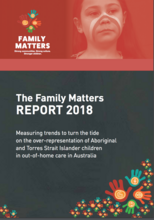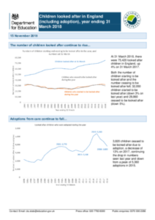Displaying 1041 - 1050 of 2214
This study sought to investigate associations of caregiver-child closeness, monitoring, and dating communication with youth's sexual initiation, sexual partners, and unprotected intercourse over the subsequent 12 months.
In this study, concept mapping was used to identify the needs of nonkinship foster parents from Caucasian ethnicity who care for unaccompanied refugee minors (URM) in Flanders (Dutch speaking part of Belgium).
The present study examined the effectiveness of Family Group Conferencing (FGC) in child welfare.
Family Matters reports set out what governments are doing to turn the tide on the over-representation of Aboriginal and Torres Strait Islander children in out of-home care, and the outcomes for children and their families.
This statistics publication from the UK Department for Education provides information about looked after children in England for the year ending 31 March 2018.
This paper presents findings on the previous life experiences of an entire cohort of ‘difficult to place’ adoptees who were placed in Australia over 26 years.
This study examined variability in problem behavior among toddlers entering new foster care placements and identified related child and parenting characteristics.
This Annie E. Casey Foundation brief, which utilizes the most comprehensive data set ever collected across all 50 states of the US, fills in key details about the lives of young people who have experienced foster care.
This is an exploratory study focused on open adoptions from foster care conducted through the public child protection agency in New South Wales, Australia.
Utilizing case examples, this discussion paper examines foster care decisions that disrupt important child-caregiver relationships.



